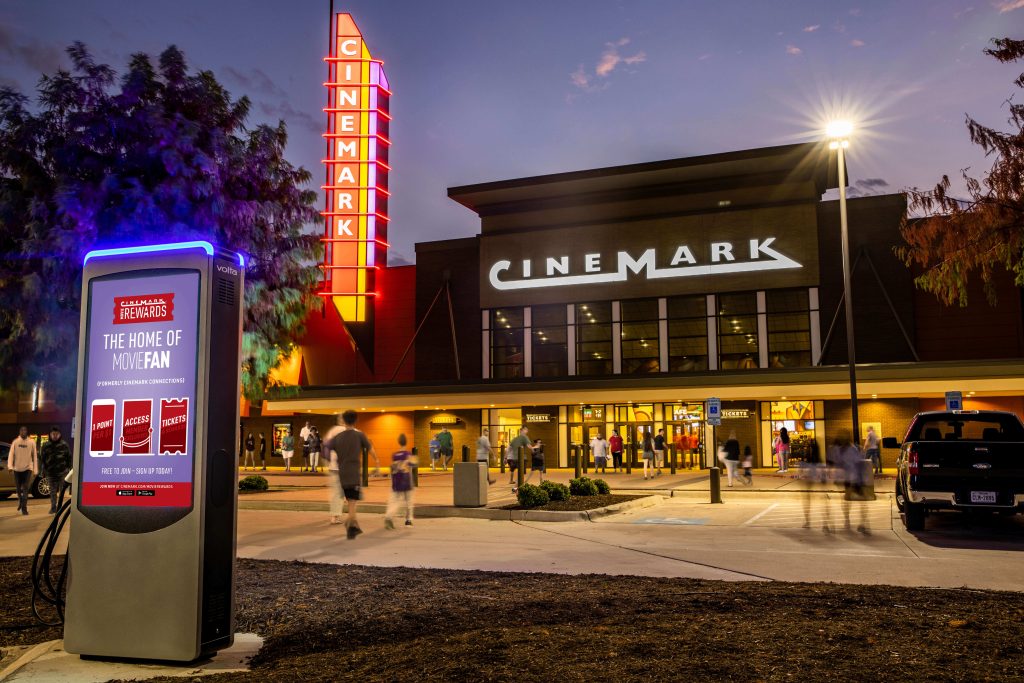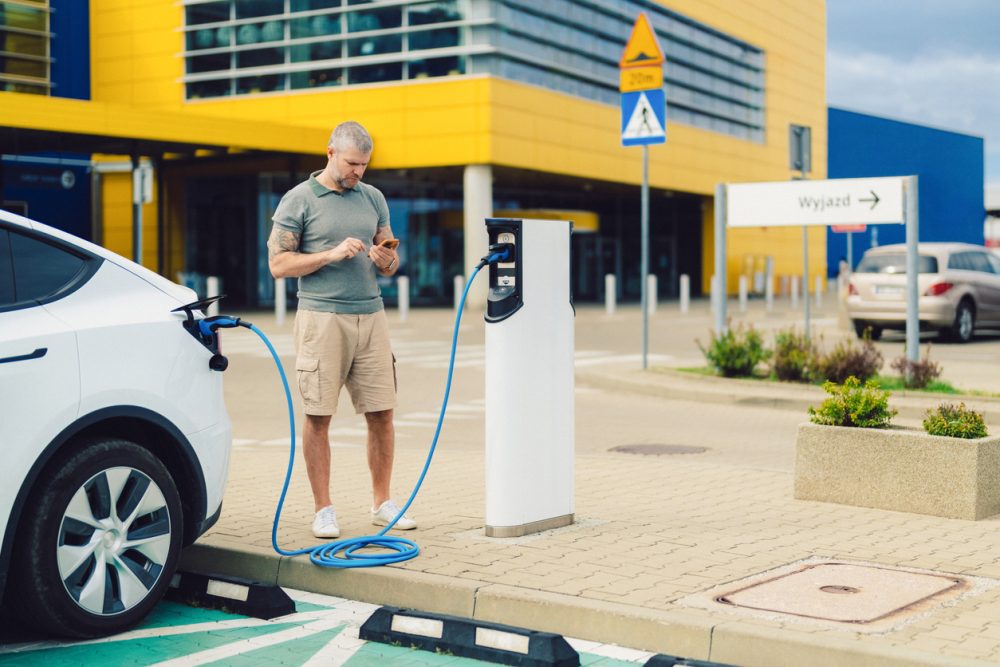EV charging stations are gaining popularity as major retailers partner with energy companies to deliver widespread charging access.

Charging stations are essential for any electric vehicle (EV) user. While most users can get through their day-to-day activities on a single charge done at home, longer trips require extra charge.
Compared with gas-dependent cars that can fill up at any station on the side of the freeway, EV cars require a more specific location to recharge. Additionally, not all chargers are created equal. There are different tiers, each with varying charging speeds and costs. The lack of accessible charging stations is a barrier to purchase for potential customers, so how can retailers and energy companies work together to entice drivers to go electric?
The EV Revolution Has Already Begun
According to the International Energy Agency (IEA), as of July 2023, “the rollout of electric vehicles is set to avoid the need for 5 million barrels of oil a day by 2030.” EVs are not just an alternative to gas-dependent cars – they are helping pave the way for more electric solutions to alleviate global emissions, including electric school busses and public transportation.
As a result, “if the EV sales growth experienced in the past two years is sustained, CO2 emissions from cars can be put on a path in line with the Net Zero Emissions by 2050 (NZE) scenario,” says the IEA. EV charging infrastructure is improving globally, but not all regions are equal. Most EV charging infrastructure is based in China and Europe, with the United States trailing behind in number of charging stations.
The United States has plans to increase EV charging production over the next decade under President Joe Biden’s Bipartisan Infrastructure Law. Per The White House, $7.5 billion is to be allocated toward the installation of 500,000 public EV chargers across the United States by 2030.
According to the US Department of Energy, there are existing state-specific regulations across the country, including the Advanced Clean Cars Program, the Zero-Emissions Vehicle Program, and the Hydrogen Fueling Infrastructure Program. The Advanced Clean Cars Program was passed by the California Air Resources Board to ensure California goes zero emission within the next 15 years.
What Types of EV Chargers are Available?
There are three levels of electric chargers. According to the Natural Resources Defense Council (NRDC), the chargers that come with the purchase of an EV are Level 1. These chargers are 120 volts, the same as a phone or laptop charger. This means the standard charging time is 40-50 hours for a full charge. These chargers fit the standard day-to-day needs of a consumer but are not feasible if one needs a charge on the go.
Level 2 chargers are similar to those used for appliances and can charge a car in ten hours. EV owners can install Level 2 chargers in their homes, which will cost more power. As a result, “public Level 2 charging stations are common at locations where drivers tend to park, like workplaces or commercial parking lots.” Killgore Industries explains that “in certain states, applicants that install Level-1 and Level-2 EV charging stations may receive up to $4,000 and $10,000 for installing a direct current fast charging (DCFC) station.”
Level 3 chargers are fast and efficient. Also known as direct current fast chargers (DCFC), these chargers are more expensive, but their prime appeal can be found in their ability to charge an EV in under a half hour. Currently available Level 3 chargers can charge at 350kW, making them perfect for drivers on road trips or those needing a quick charge. However, Level 3 chargers are not always compatible, especially with older models that only charge at 50kW. Additionally, not all cars have the same battery. “Level 2 charging can generally charge even the biggest EV batteries overnight.”
It is not just chargers consumers need to consider when deciding whether to purchase an EV. The NRDC explains that some EV brands have different plugs for each style of charging port. “EVs sold in the United States (besides Tesla) use a J1772 plug (also known as a J-plug)” that is compatible with Level 1 and Level 2 charging. For Level 3 DCFC, EVs that are not Tesla use a combined charging system (CCS) or CHAdeMO plugs. Tesla use a universal plug and a J1772 adaptor.
Where can I find an EV charger in public?
Electric chargers can be found primarily at gas stations and retail centers. The energy company BP intends to install 100,000 charging points nationwide by 2030. In the United States, the goal is to invest $1 billion by 2030 to build quick charging stations in key areas such as airports. CNET states that grocery, movie theaters, are the most common retail spaces to add charging stations.
Grocery and Drugstore
- In April 2023, Walmart announced that the retail chain would
- add charging stations to thousands of Walmart and Sam’s Club stores nationwide.
- Walgreens currently offers EV charging at 400 locations in the United States, with plans to double the number of locations in the coming years.
- In 2022, Kroger collaborated with Volta to install 350 charging
- stations nationwide.
- 7-Eleven has a network of fast electric vehicle DC charging stations called 7Charge in five states across the United States.
Restaurants - Taco Bell franchised the first of nearly 300 of its EV restaurants
- in San Francisco in 2022.
- Subway has partnered with GenZ EV Solutions to offer
- charging parks at select locations.
- In 2022, Starbucks announced a pilot DC fast charger program to implement Volvo-branded EV charging stations throughout
- Colorado, Idaho, Oregon, Utah, and Washington along a “1,350-mile route from Denver to the company’s headquarters in Seattle.”
Retail - Macy’s was one of the first to offer EV charging stations in 2014. The retail chain “has expanded the partnership with Volta in 2021 and now offers 124 charging stations across 51 locations nation wide,” according to CNET.
- Kohl’s has pledged to offer EV charging at over 300 locations.
- IKEA and Electrify America announced a collaboration to install ultra-fast public charging stations in over 25 locations.
- Cinemark offers free Volta EV charging at more than 100 locations.
What are the benefits of offering EV charging?
EvoCharge explains that businesses and retail stations can generate passive income and attract new eco-conscious audiences by offering charging stations. Some spaces such as movie theaters and retail spaces “have Level 2 chargers that can add 25 miles of range in about an hour,” which may entice individuals to frequent areas that offer dual-purpose charging and entertainment. Therefore, the return on investment may exceed the installation cost with people staying longer and spending more than before.
Finally, EV stations can put individual cities and towns on the map by signaling their commitment to accessibility and sustainability. Rural areas can increase tourism traffic by adding EV charging stations and advertising them. The US Department of Transportation explains that “given current limits on the range of EVs, those drivers may be especially attuned to the availability of charging stations along their routes and will plan their stops accordingly.”
EVs are the future of transportation, and businesses can take advantage of state and federal incentives by installing EV charging stations in their retail and consumer spaces for a fraction of the original cost. Additionally, EV charging stations bring in customers and revenue while encouraging those customers to stay long enough to charge their EVs. Essentially, EV charging stations can help businesses incentivize spending for longer periods and provide additional services that make them a one-stop shop for spending and charging.















